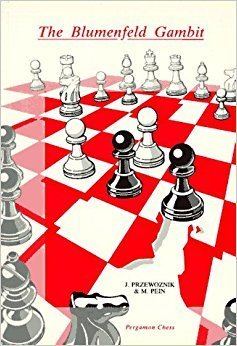a b c d e f | b c d e f g | |
 | ||
The Blumenfeld Gambit is a chess opening characterised by the moves 3...e6 4.Nf3 b5 in the Benoni Defence arising after:
Contents
- Gm alterman s gambit guide blumenfeld gambit part 1 at chessclub com
- General considerations
- Origin
- References
or alternatively:
1. d4 Nf6 2. c4 e6 3. Nf3 c5 4. d5 b5In fact, as many as 30 different move orders are possible. The Encyclopaedia of Chess Openings (ECO) sorts the Blumenfeld Gambit under code E10 (1.d4 Nf6 2.c4 e6 3.Nf3).
Gm alterman s gambit guide blumenfeld gambit part 1 at chessclub com
General considerations
Black sacrifices a wing pawn to establish an imposing centre with pawns on c5, d5 and e6. The natural development of the bishops to b7 and d6, combined with the open f-file for a rook, tend to facilitate Black's play on the kingside. White, on the other hand, will typically look to counter in the centre by playing e4 at some point, while his additional queenside pawn also offers him some initiative on that side of the board.
Origin
The opening is named after the Russian master Benjamin Blumenfeld, and was later played by World Chess Champion Alexander Alekhine.
The opening position can also be reached via the Benko Gambit (1.d4 Nf6 2.c4 c5 3.d5 b5 4.Nf3 e6). Possible continuations are 5.dxe6 (Kan-Goldenov, 1946), 5.Bg5 (Vaganian-K. Grigorian, 1971), 5.e4, or 5.a4 (Rubinstein-Spielmann, 1922), with 5.Bg5 being most frequently seen when this gambit is employed.
